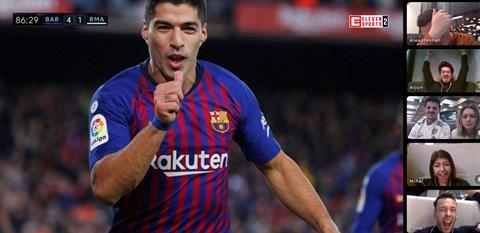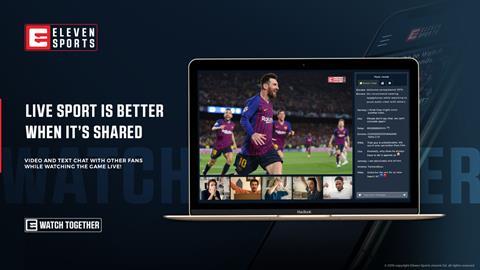Natasha Bougourd speaks about the biggest changes to sports broadcasting over the past two years

When the first national lockdown was announced back in March 2020, it came with the news that we’d no longer be able to attend sporting events live.
Most people weren’t able to attend any live sporting events for over a year. As a result, live sports became more accessible to view at home. The pandemic also changed the way these broadcasts were delivered, with remote commentary teams and social distancing in place.
Now that most lockdown restrictions have eased, are we still utilising the technologies and systems that allowed the continuation of sports broadcasting?
Sports commentary goes remote
During the March 2020 national lockdown, most broadcast sports were completely cancelled. Then, as many resumed via enterprise video streaming but without live audiences, we saw many social distancing measures in place. Presenters were six feet apart, and in many cases, separated by glass partitions. Some broadcasters, though, weren’t even in the venue.

For coverage of major sporting events, including the 2020 Tokyo Olympic Games, the French and US Opens, and the Tour De France, Eurosport used a low-latency solution that allowed commentators to narrate the events remotely. BT Sport also used remote commentators when its Bundesliga coverage resumed in May 2020.
This presented significant challenges, especially around delays to commentary and delivering multiple commentary streams to different audiences over one live video stream. The latency, or measure of delay between the video capture, playback, and commentator receiving it at home, needed to be below 250ms to avoid a delay to viewers. Eurosport deemed its use of the technology during Covid lockdowns a success and now uses it regularly even with restrictions eased in many countries of broadcast.
The appetite for streaming and broadcasting grows
The 2020/21 Premier League season began with no supporters inside stadiums, and it stayed that way for most of the season save for some fans of a few lucky clubs during a brief winter window. As a result, the Premier League struck a deal with Sky Sports, BT Sports, and Amazon Prime to broadcast every match that season live.
Now that supporters are once again able to attend matches, we’ve reverted back to a model of a small number of games being selected for live broadcast at set times. But for many, the temporary removal of the 3pm blackout that prevented standard matches from being broadcast was welcomed. While live supporters are the lifeblood of the sport, this opened it up to many who can’t be there in person.

This issue was compounded during the saga of the breakaway European Super League, which was widely condemned and eventually fell through. It was discovered that traditional match-going supporters were allegedly deemed “legacy fans” by the clubs involved, with attracting TV viewers and supporters in other countries deemed the priority.
Many now argue that, while live supporters are of utmost importance to football clubs and other sports, those who can’t attend matches should also be catered for. What’s more, an end to the 3pm blackout hasn’t been ruled out. We’ve tasted the sweet honey of being able to watch each of our team’s matches, and now we want more.
Watch together when miles apart
For millions of sports fans, one of the most missed elements of attending live events was watching it with their friends and family. At various points between March 2020 and July 2021, people couldn’t even gather in pubs or each other’s homes to share the experience.
A number of broadcasters, including Eleven Sports and Sky Sports, offered viewers the opportunity to virtually watch matches and events together. Sky Sports’ Fanzone allowed six households to convene virtually on a second screen – whether that was their mobile devices, tablets, or laptops – and watch football matches together in real time. The service also offered trivia questions related to the live match for a fun, interactive experience.

Eleven Sports’ Watch Together feature operates in a similar way, with up to four households able to connect at once. As well as private rooms with friends and family, viewers also had the opportunity to join ‘open rooms’, which allowed them to meet new people virtually and connect with other fans.
This again offers a great opportunity for live experiences to be replicated for people who can’t be close to friends and family or who are unable to attend live events.
Sports broadcasters were forced to make changes as a result of multiple Covid lockdowns. Not only were live attendees prohibited for 18 months in many sports, but commentators, pundits, and live-stream editors were also remote in many instances. And, while many sports in multiple European countries can once again be played in front of a crowd, we’re seeing shifting demands from fans as a result of live offerings during Covid. Will they eventually be met in the long term?

Natasha Bougourd is a copywriter with over 8 years’ experience in online writing. Natasha has written about a number of topics and is an expert in tech innovation.




No comments yet